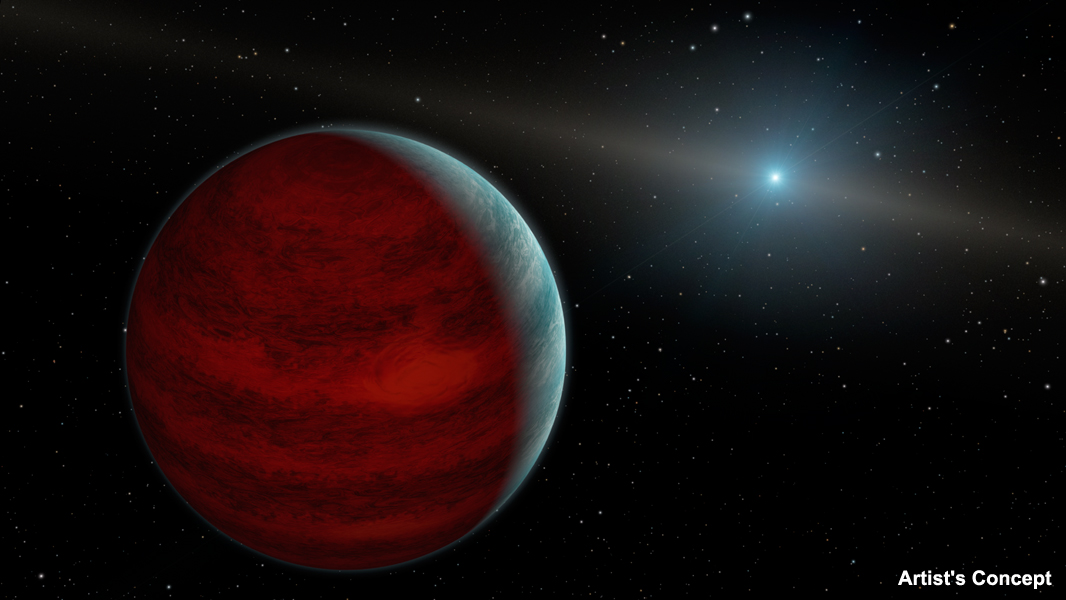Stellar Rejuvenation: Some Exoplanets May Get Facelifts

Astronomers may have discovered an exoplanet that has found the elixir to planetary youth, knocking billions of years off its age.
Until now, stellar rejuvenation has been pure conjecture, but after studying a white dwarf star called PG 0010+280, it turns out that one very interesting explanation for an excess in detected infrared radiation may be down to the presence of an exoplanet that was given a facelift.
NEWS: Kepler Watches White Dwarf Warp Spacetime
White dwarf stars are the remnant husks of stars that have died. Eventually, when a star like our sun runs out of fuel, puffing up into a red giant star, its layers of plasma will be blasted into space by powerful, suicidal stellar winds. This will create a beautiful planetary nebula with a small, dense white dwarf in the core. [The Strangest Alien Planets (Gallery)]
But what happens to all this material that has been jetted into space? Well, as the theory goes, some of it may fall onto massive gaseous exoplanets orbiting far away from the star. Before their star ran out of hydrogen and puffed up into a red giant, that exoplanet was aging gracefully, cooling down billions of years after formation.
The situation changed, however, when its atmosphere became bulked up with stellar plasma, re-heating the massive world and making it appear much younger than it really is.
NEWS: White Dwarfs Are Eating ‘Earth-like’ Planets for Dinner
Breaking space news, the latest updates on rocket launches, skywatching events and more!
"When planets are young, they still glow with infrared light from their formation," Michael Jura of the University of California, Los Angeles, co-author of the study published in The Astrophysical Journal, said in a statement. "But as they get older and cooler, you can’t see them anymore. Rejuvenated planets would be visible again."
White dwarf studies have gone into overdrive in recent years after astronomers realized they could study white dwarf atmospheres to find the pulverized remains of asteroids and planetary bodies. When passing into the white dwarf phase, the planets and asteroids that are in orbit may drift too close to the powerful tidal forces near that star, and become shredded.
During a survey of white dwarfs for the chemical signatures of these pulverized planetary remains, undergraduate student Blake Pantoja, who was studying at UCLA at the time, came across something weird in data from NASA’s Wide-field Infrared Survey Explorer, and follow-up study by NASA’s Spitzer Space Telescope confirmed the strange excess in infrared light coming from PG 0010+280. At first the team assumed the excess was radiating from a disk of the pulverized remains of asteroids that may have been present — but the data didn’t fit with this explanation.
ANALYSIS: Recreating White Dwarf Atmospheres in the Lab
So two possible explanations remain: perhaps the excess is being generated by a companion brown dwarf (a failed star) or, potentially, a rejuvenated planet, heated up by an influx of stellar matter.
"I find the most exciting part of this research is that this infrared excess could potentially come from a giant planet, though we need more work to prove it," said Siyi Xu of UCLA and the European Southern Observatory in Germany. "If confirmed, it would directly tell us that some planets can survive the red giant stage of stars and be present around white dwarfs."
To confirm if this infrared excess is indeed a rejuvenated planet, astronomers are looking to NASA’s James Webb Space Telescope (that is planned for a 2018 launch) for help. Although tantalizing, we’ll have to wait for confirmation as to what this signal is.
This article was provided by Discovery News.
Ian O'Neill is a media relations specialist at NASA's Jet Propulsion Laboratory (JPL) in Southern California. Prior to joining JPL, he served as editor for the Astronomical Society of the Pacific‘s Mercury magazine and Mercury Online and contributed articles to a number of other publications, including Space.com, Space.com, Live Science, HISTORY.com, Scientific American. Ian holds a Ph.D in solar physics and a master's degree in planetary and space physics.
